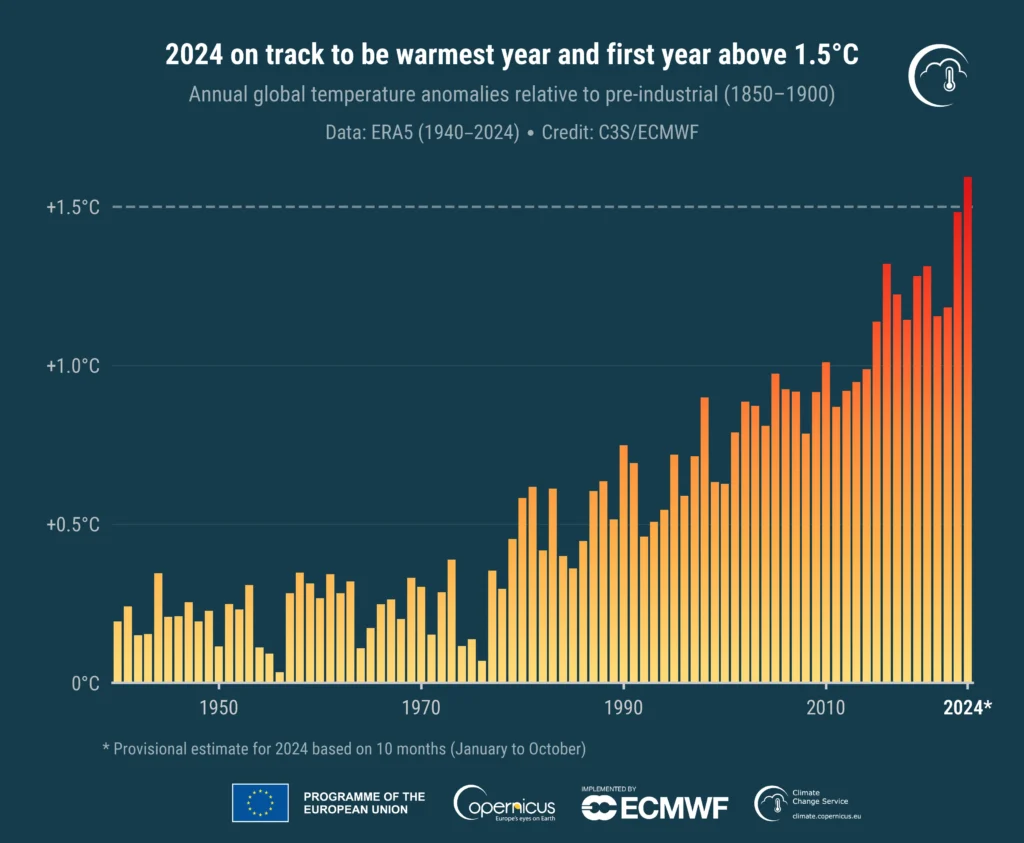Australia Records Its Second-Hottest Year as Global Temperatures Break Records in 2024

Australia had its second-hottest year in 2024, with the national average temperature 1.46°C above the 1961-90 baseline, according to the Bureau of Meteorology.
The Australian Bureau of Meteorology reports that the 2024 average temperature for the country are just below the 1.51°C rise noted in 2019 and above the 1.34°C recorded in 2013.
“Australia’s second-warmest year since national records began in 1910, with the national mean temperature 1.46 °C warmer than the 1961–1990 average,” reports Australia’s Bureau of Meteorology.
We recently reported that Indian Meteorological Department (IMD) reported that in 2024 India has endured its hottest year on record since 1901. The average temperature recorded in 2024 in India stood at 25.75°C, 0.65°C above normal.
Globally, 2024 was the warmest year on record, with temperatures 1.5°C above pre-industrial levels for the first time, according to Copernicus Climate Change Service, breaching the Paris Agreement threshold for a short time with long term breach likely if current policies continue.

UN Secretary-General António Guterres in his New Year message confirmed the decade being the hottest on recorded history including 2024, “I can officially report that we have just endured a decade of deadly heat. The top 10 hottest years on record have happened in the last 10 years, including 2024.”
““This is climate breakdown in real time,” Guterres said.
Climate change caused at least 3,700 deaths in 2024 and displaced millions, according to World Weather Attribution recent analysis. It also added 41 days of dangerous heat, worsened droughts and intensified record-breaking floods in parts of the world, the report finds out.
“Extreme weather reached dangerous new heights in 2024. This year’s record-breaking temperatures fueled unrelenting heatwaves, drought, wildfire, storms and floods that killed thousands of people and forced millions from their homes. This exceptional year of extreme weather shows how dangerous life has already become with 1.3°C of human-induced warming.”
‘When Risks Become Reality: Extreme Weather In 2024‘ – WWA
NASA recorded atmospheric carbon dioxide at 420 ppm in November 2024, compared to 280 ppm before the Industrial Revolution. The WMO estimated global carbon emissions for 2024 at 41.6 billion tonnes, up from 40.6 billion tonnes in 2023.
November 2024 was the second warmest November on record, with global temperatures 1.61°C above preindustrial levels, according to the Berkeley Earth’s November 2024 global temperature update. This temporary rise surpassed the 1.5°C Paris Agreement limit by a good margin.
Berkeley Earth has issued the latest update with the warning for world nations that, “Unless sharp reductions in man-made greenhouse gas emissions occur soon, the long-term average is likely to pass 1.5 °C during the late 2020s or early 2030s.” According to Berkeley Earth, their data analysis also showed 18 countries set new November heat records.
Extreme heatwaves, fires, and disasters defined 2024, and the Met Office predicts 2025 to be similarly warm.






